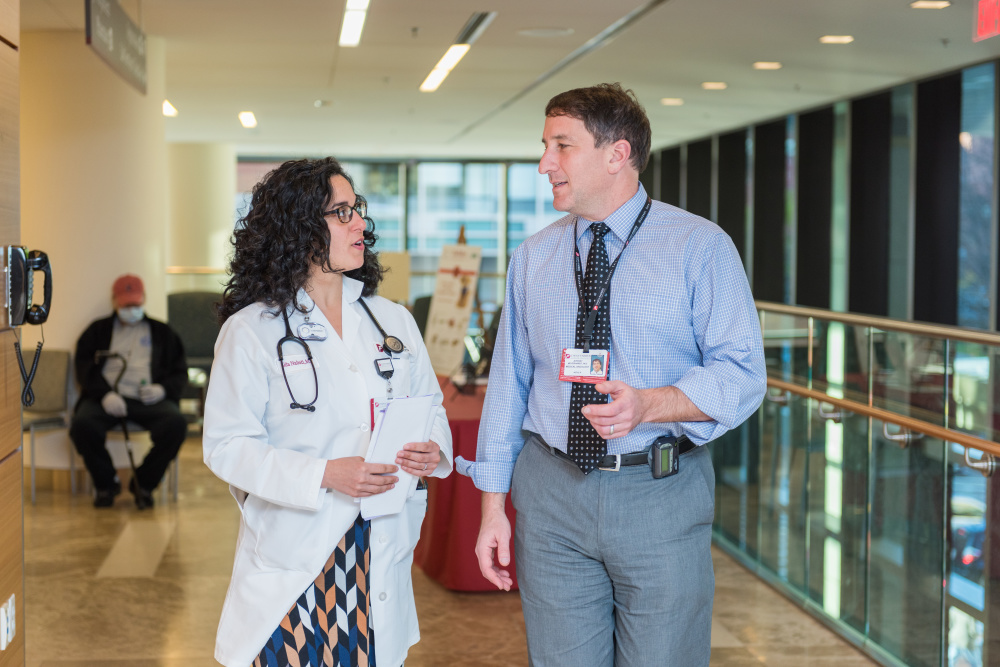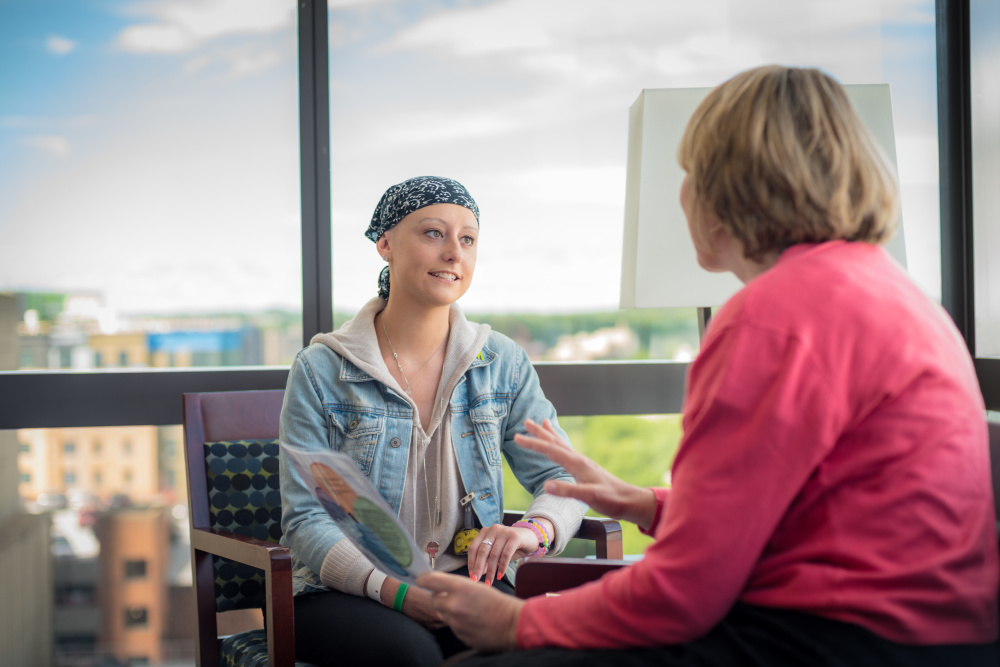
A cancer care team often involves quite a few players: oncologists, nurses, radiation oncologists, social workers, psychiatrists, and others. While these experts often improve patient outcomes, such a large multidisciplinary team can sometimes make communication and coordination difficult. Dana-Farber’s Psychosocial Oncology and Palliative Care department is working to change that.
Palliative care clinicians are now embedded on several treatment floors in the Yawkey Center for Cancer Care, including the Gastrointestinal Cancer Treatment Center, whose patients often have challenging symptoms and quality of life concerns stemming from their cancer and treatment. In this new model, palliative care clinicians see patients directly with their oncologist or one-on-one, and also offer guidance to providers. Having palliative care appointments readily available in the clinic helps streamline the process for patients, removing the need for an extra trip to Boston and alleviating some fear by having the patient’s oncologist there for extra support.
“At times, sending patients up to the palliative care clinic causes a bit of a disconnect, but when providers are right here, it’s easier to communicate,” says Jeffrey Meyerhardt, MD, MPH, clinical director of the Gastrointestinal Cancer Treatment Center, whose group is partnering with Lida Nabati, MD, of palliative care, and Andrea Enzinger, MD, a medical oncologist and palliative care provider.
Read More:
Nabati often starts her afternoons on the floor with a visit to the provider workroom, where she gets a report on patients from nurse practitioners and provides advice on which patients may benefit from palliative care.
“Patient care can be pretty dynamic, and having the opportunity to check in face-to-face with other clinicians has been helpful,” she says.
Nabati tells providers that it is never too early to refer to palliative care, and that it isn’t just for late-stage cancers; having a serious illness can be reason enough to introduce it. She and her palliative care colleagues work not only with oncologists, but also social workers and infusion nurses, to identify appropriate patients for palliative care.
“My role is to preserve the primary relationship between the oncology team and the patient,” Nabati explains. “Patients and I discuss symptom management and how they’re coping with their illness, and, if desired, we work with them and their oncology team to define their goals and determine what’s best for them in their treatment.”

While palliative care has become more mainstream in recent years, with more patients receiving care earlier in treatment and the palliative clinic increasingly seeing self-referrals, some education is still necessary about what palliative care is and how it can help.
“There are many parts to treating cancer, and the understanding that cancer care is a collaborative effort is much more accepted today,” Meyerhardt says, noting that his team has had a close relationship with Dana-Farber’s palliative care providers for many years. “This collaboration helps us better communicate with each other and share our perspective of what’s going on with patients, ultimately enhancing each patient’s care and experience.”
In addition to an ongoing Adult Palliative Care Clinic, embedded clinicians currently work in the gastrointestinal, sarcoma, gynecologic, and head and neck clinics at Dana-Farber on certain days of the week, with hopes to expand to all treatment centers in the coming years.
